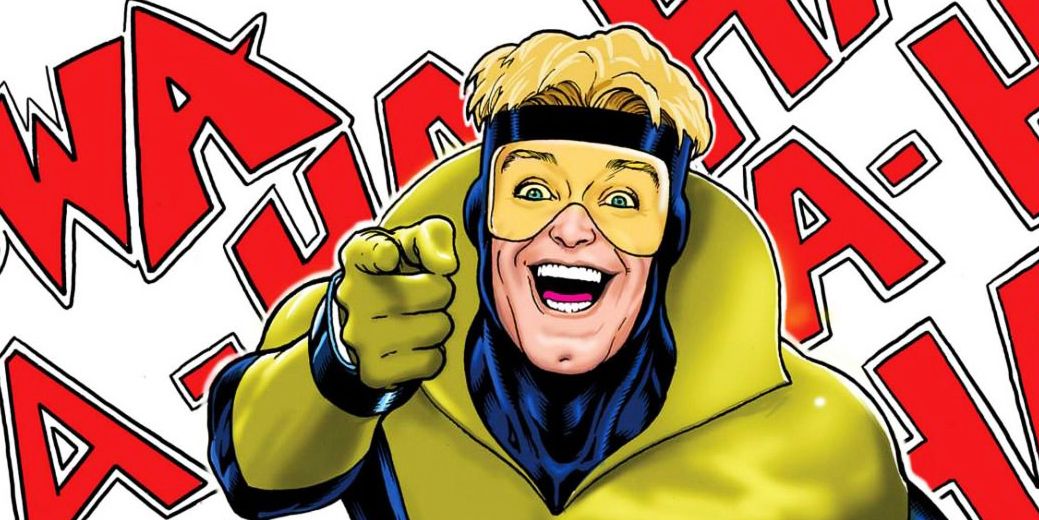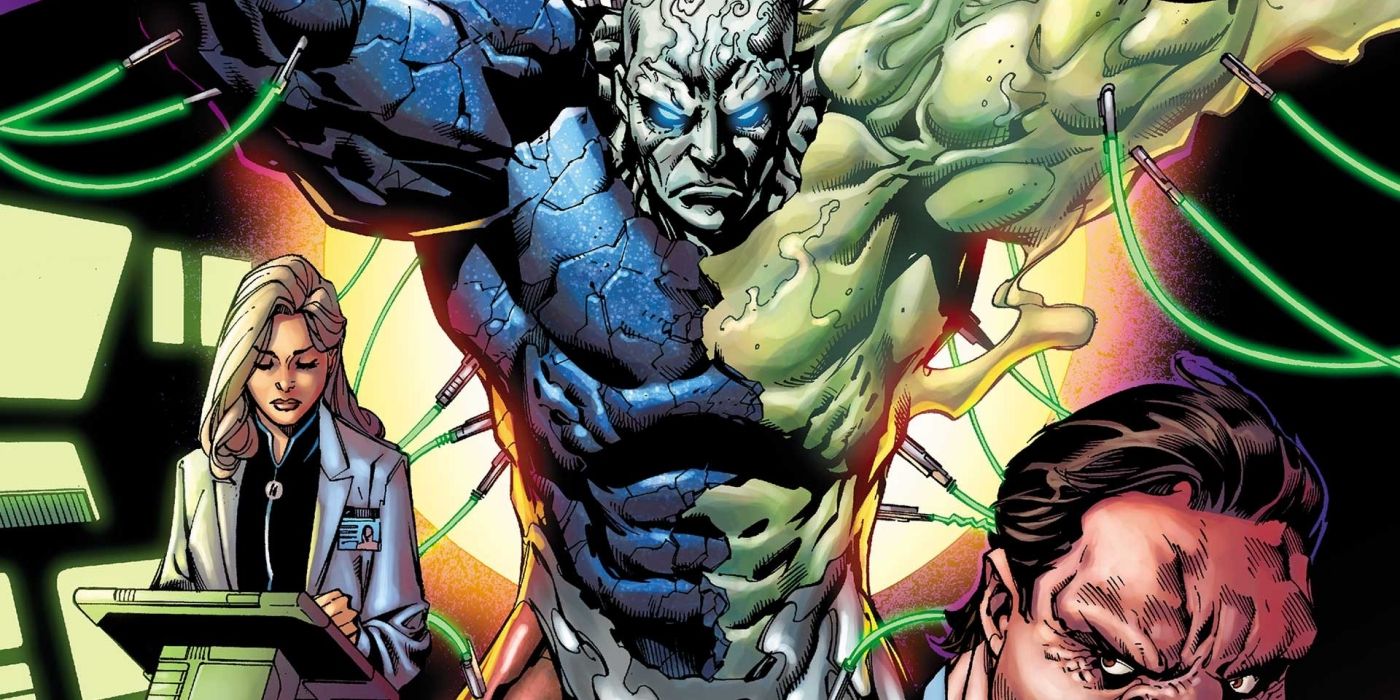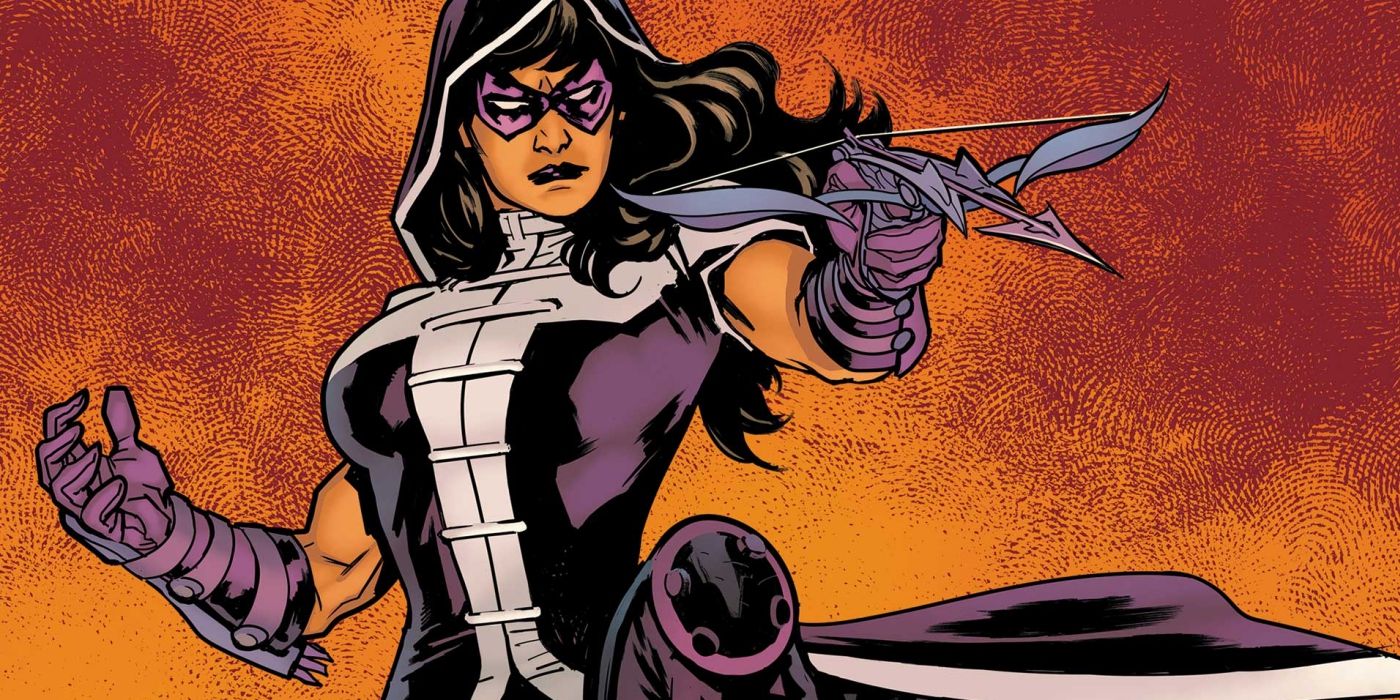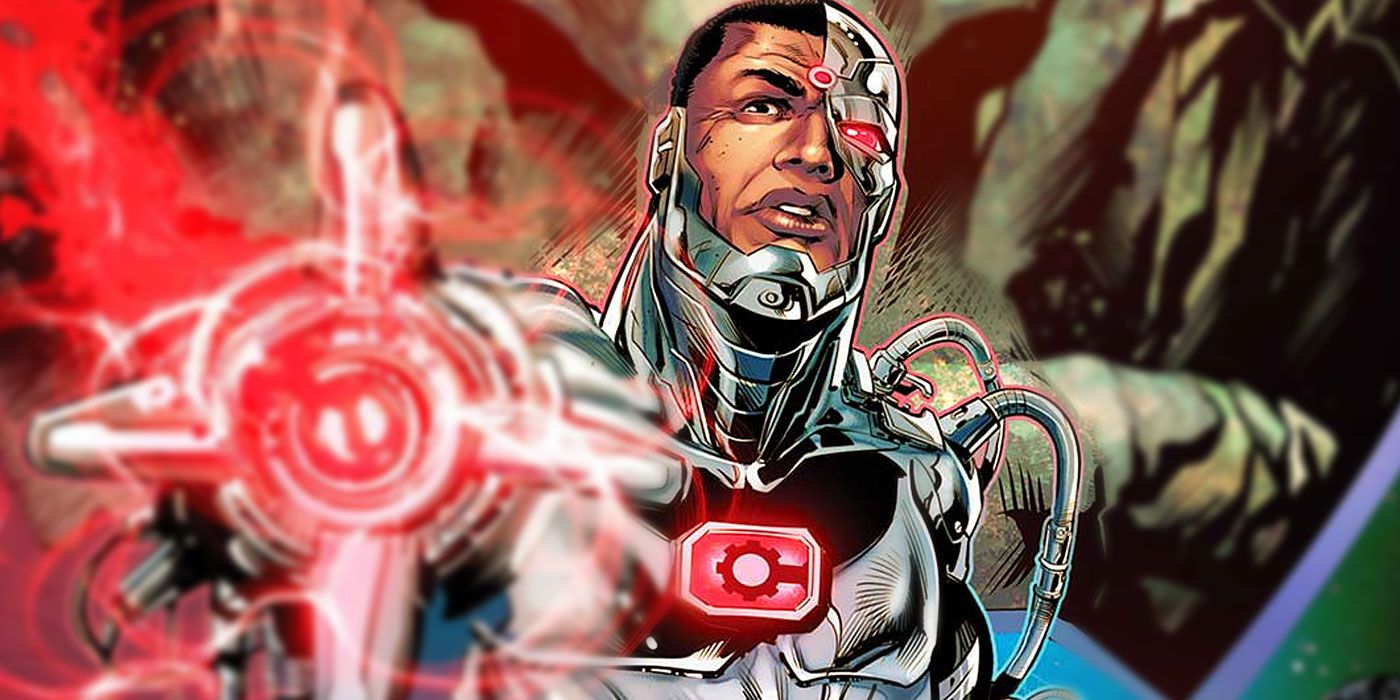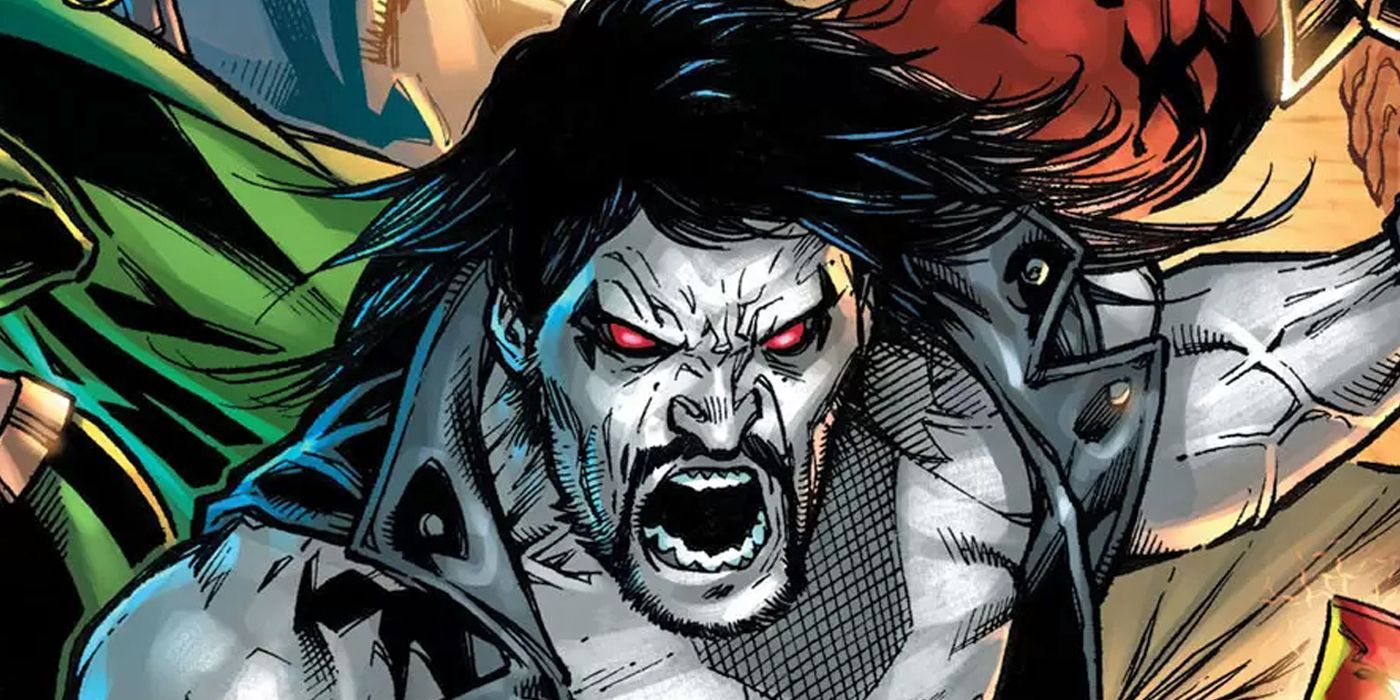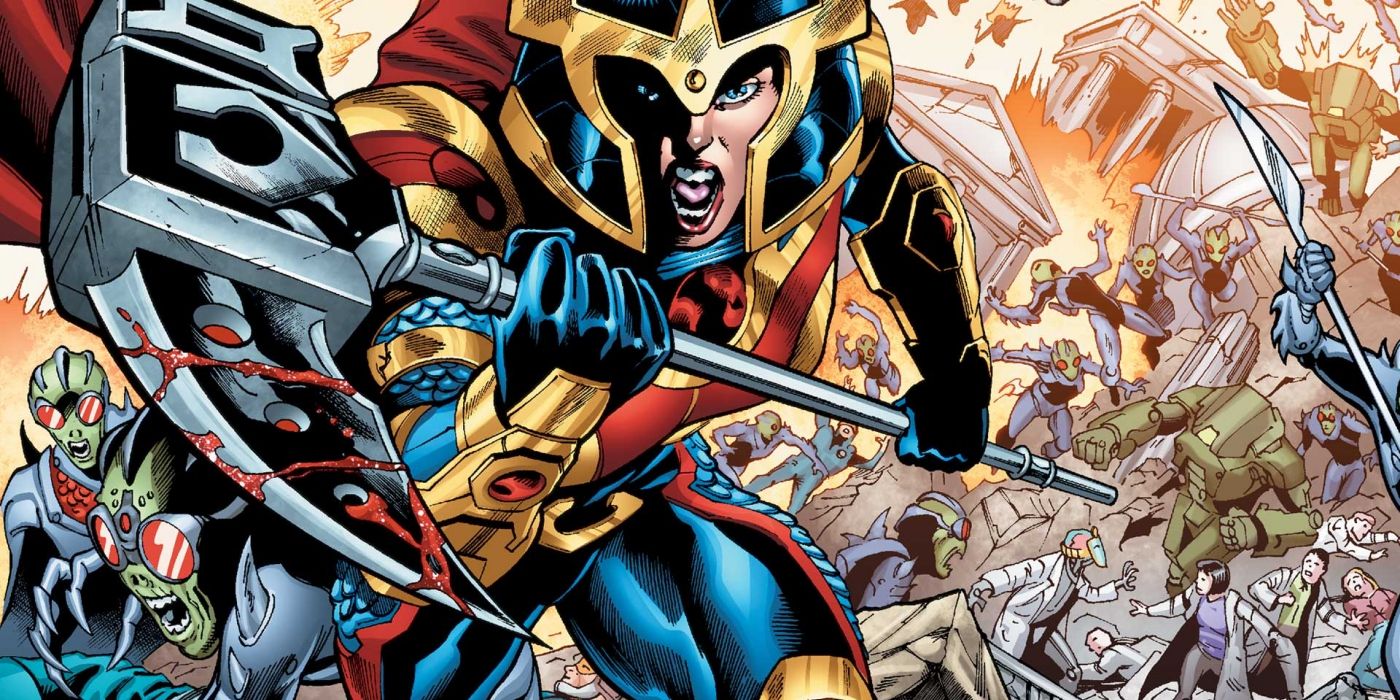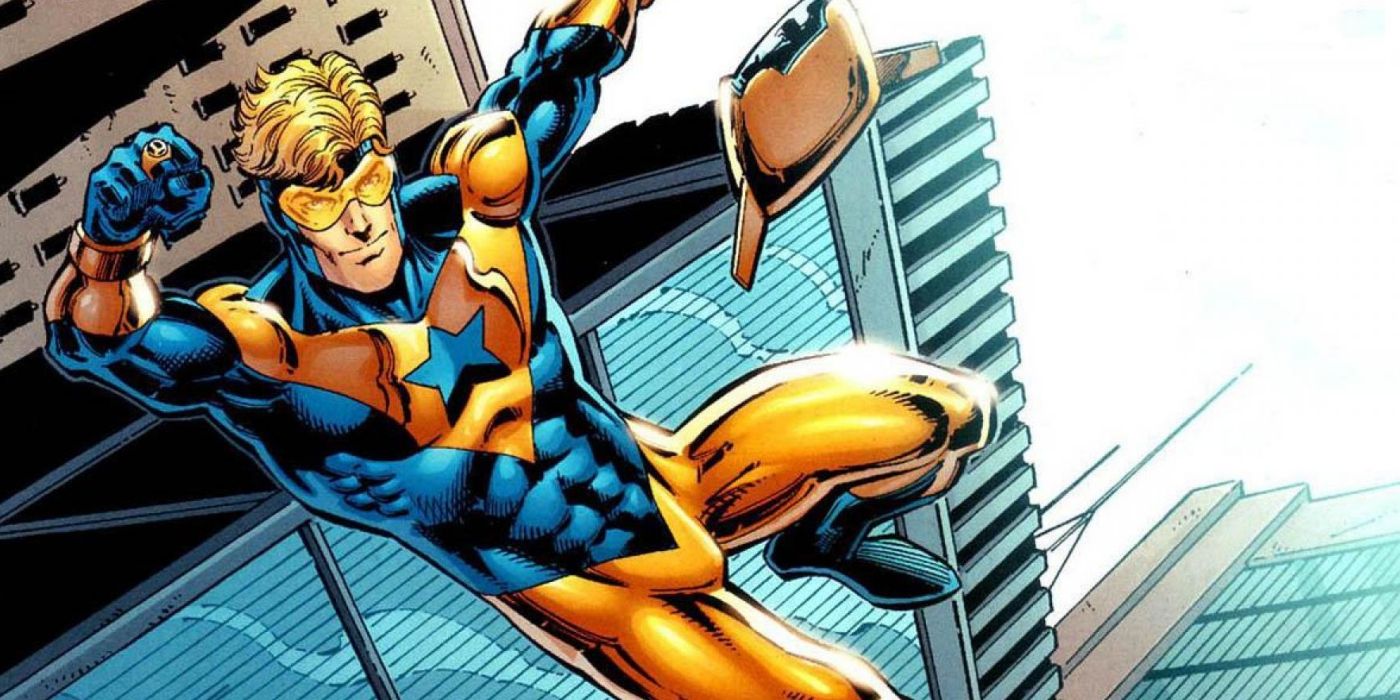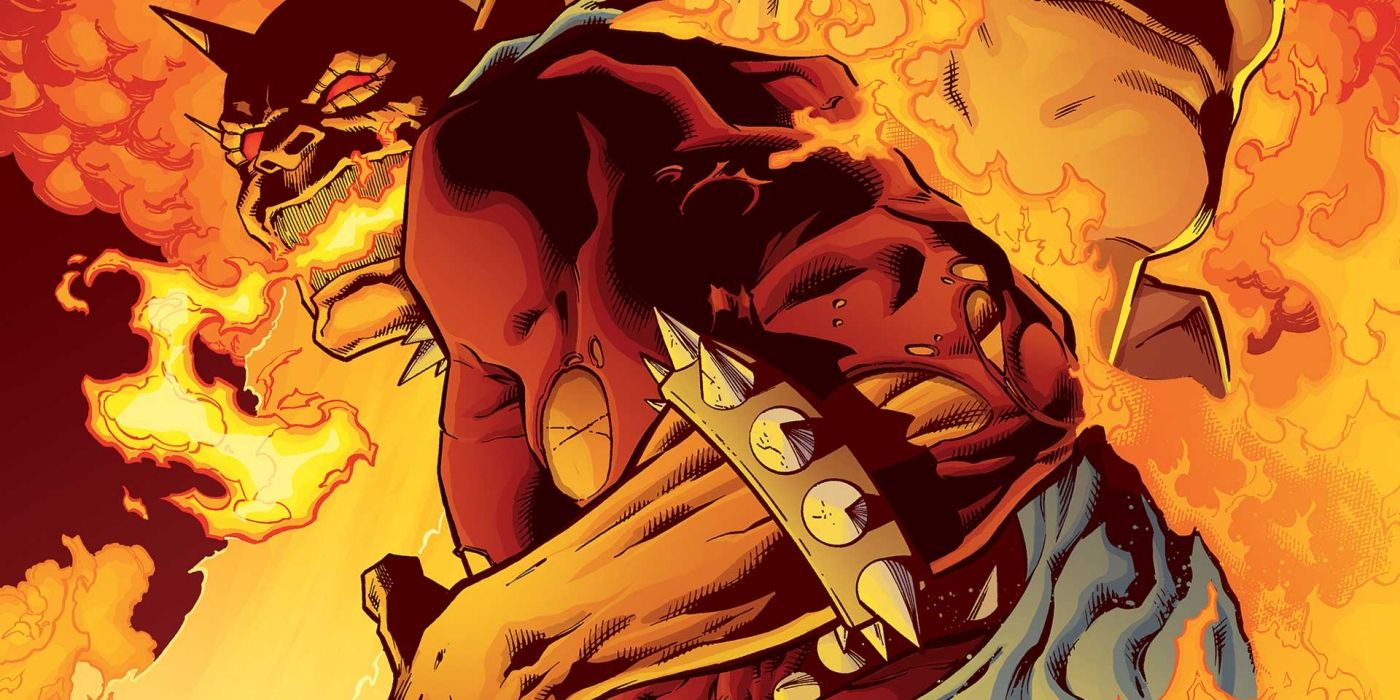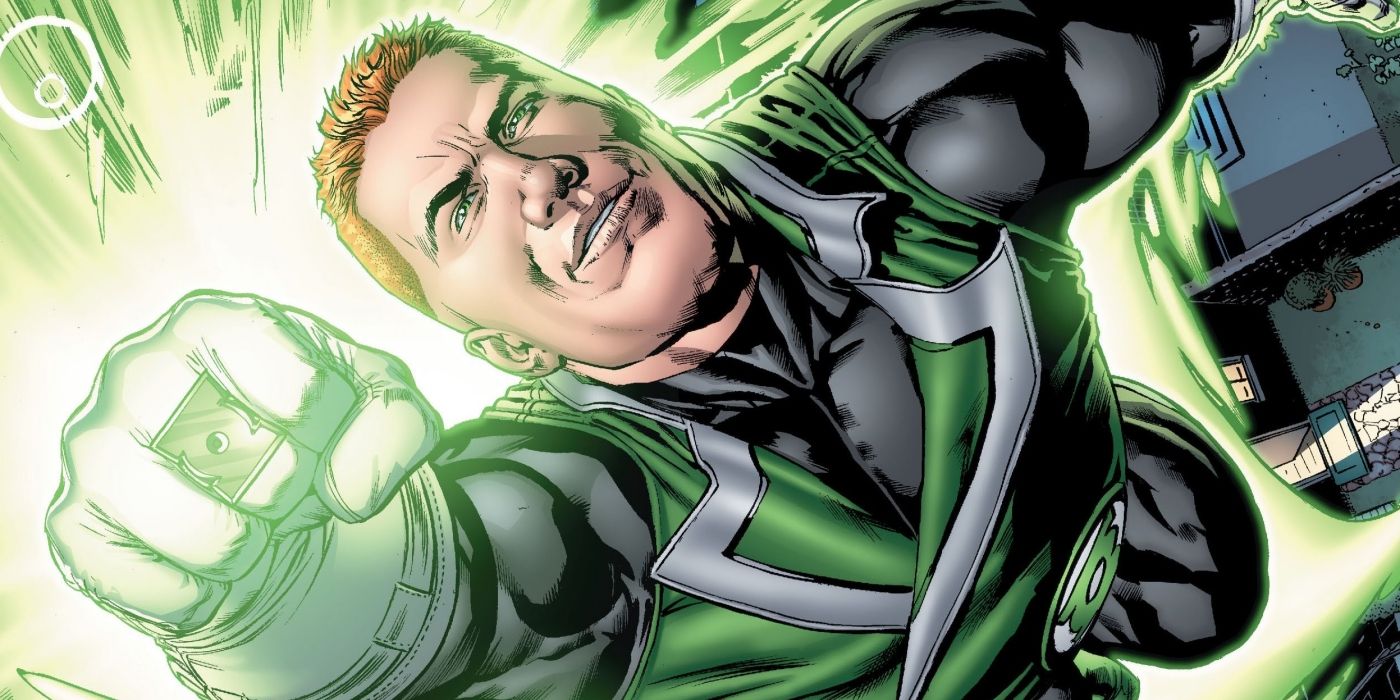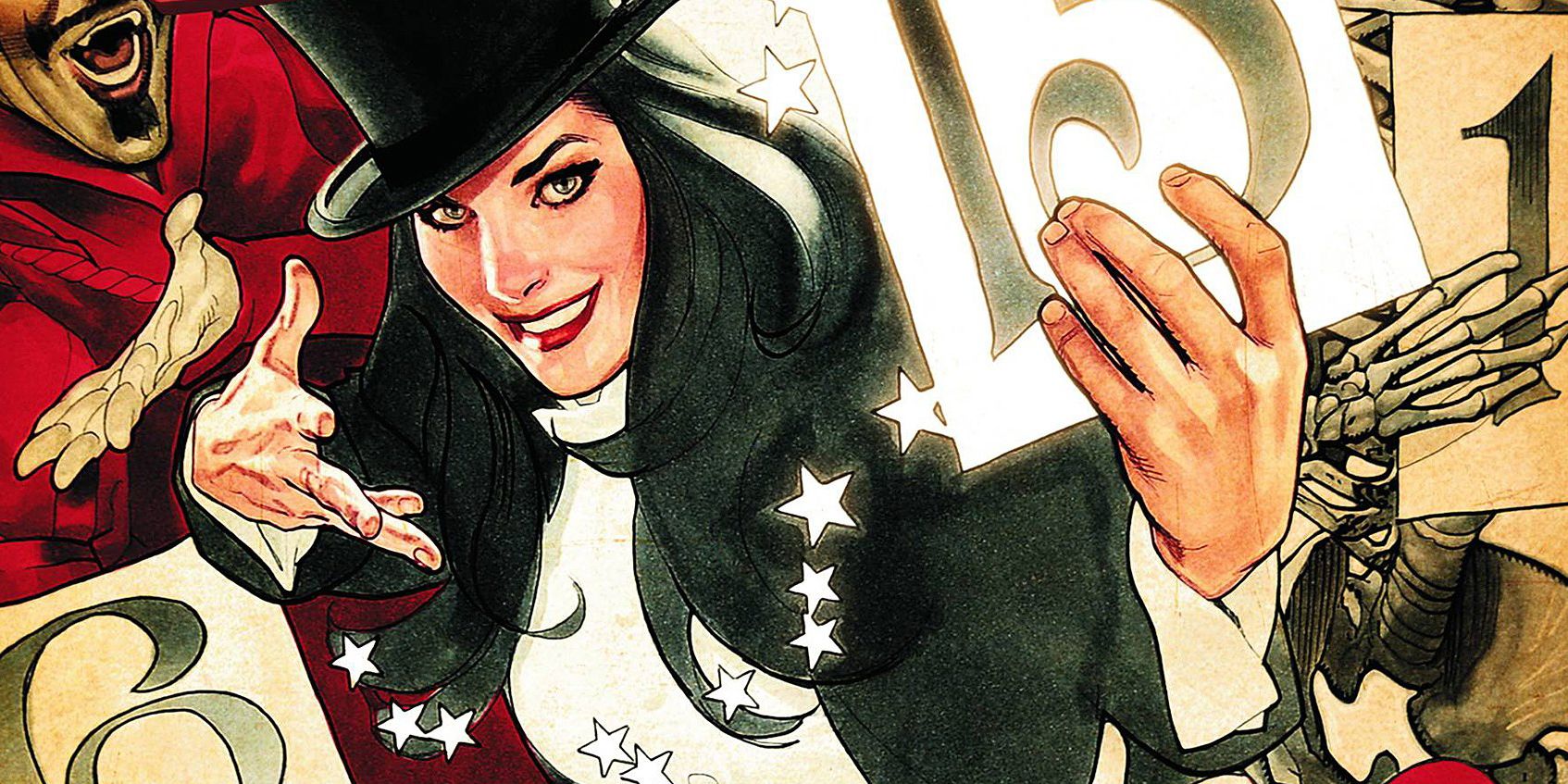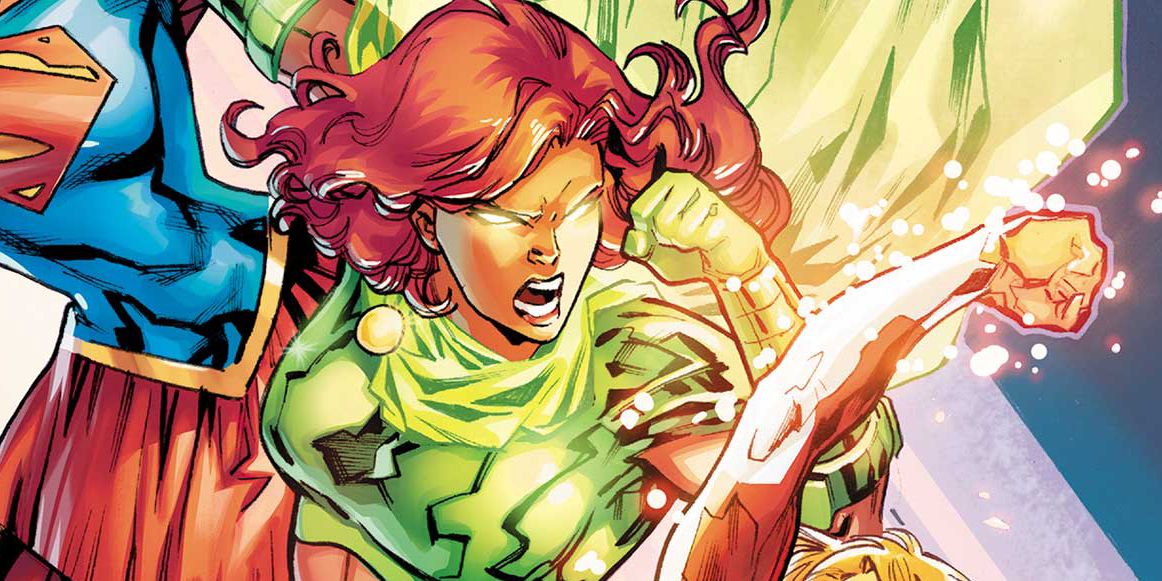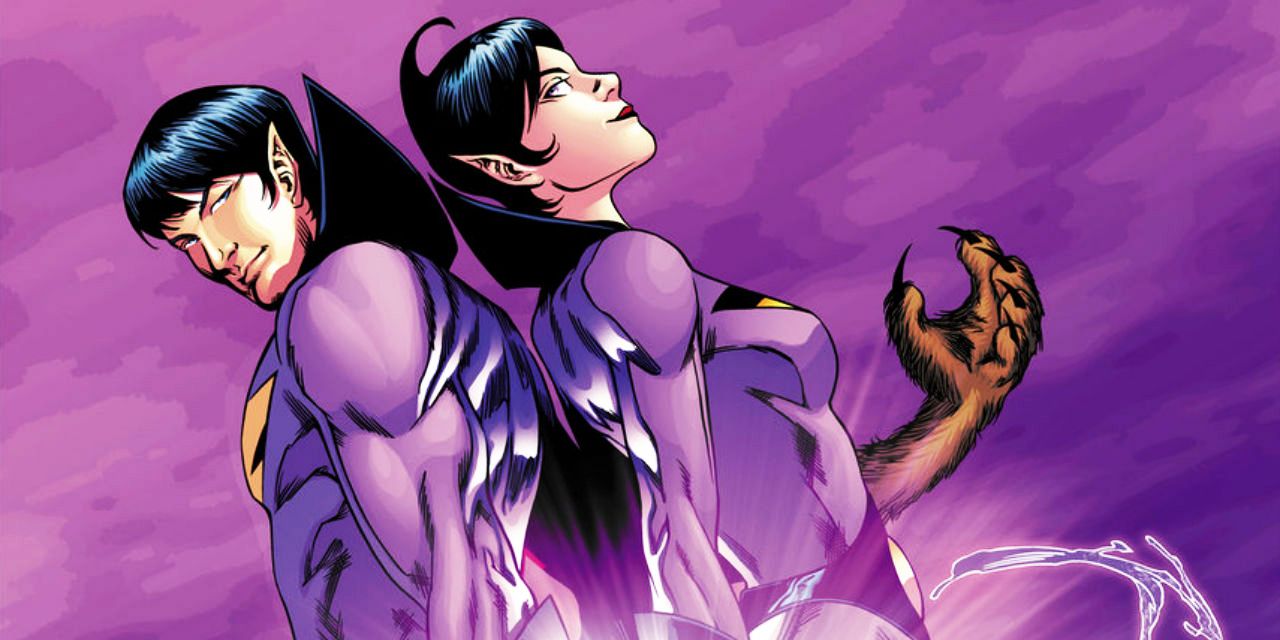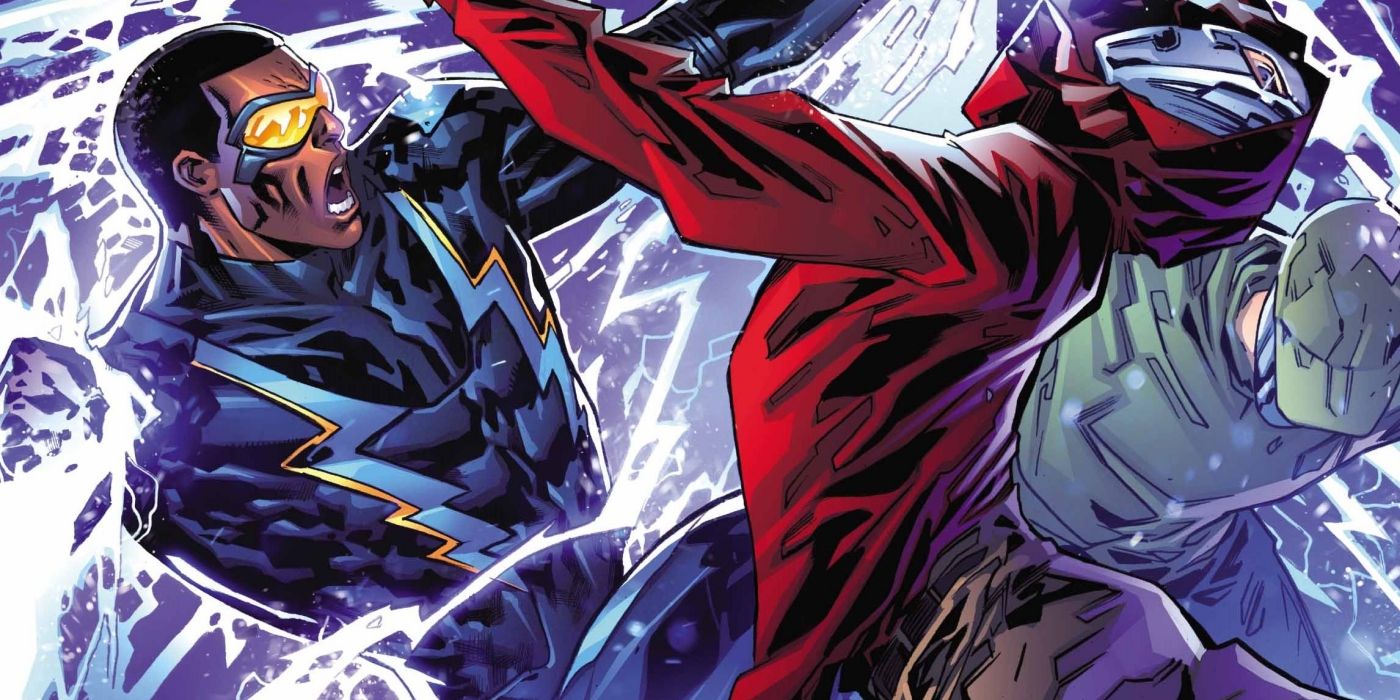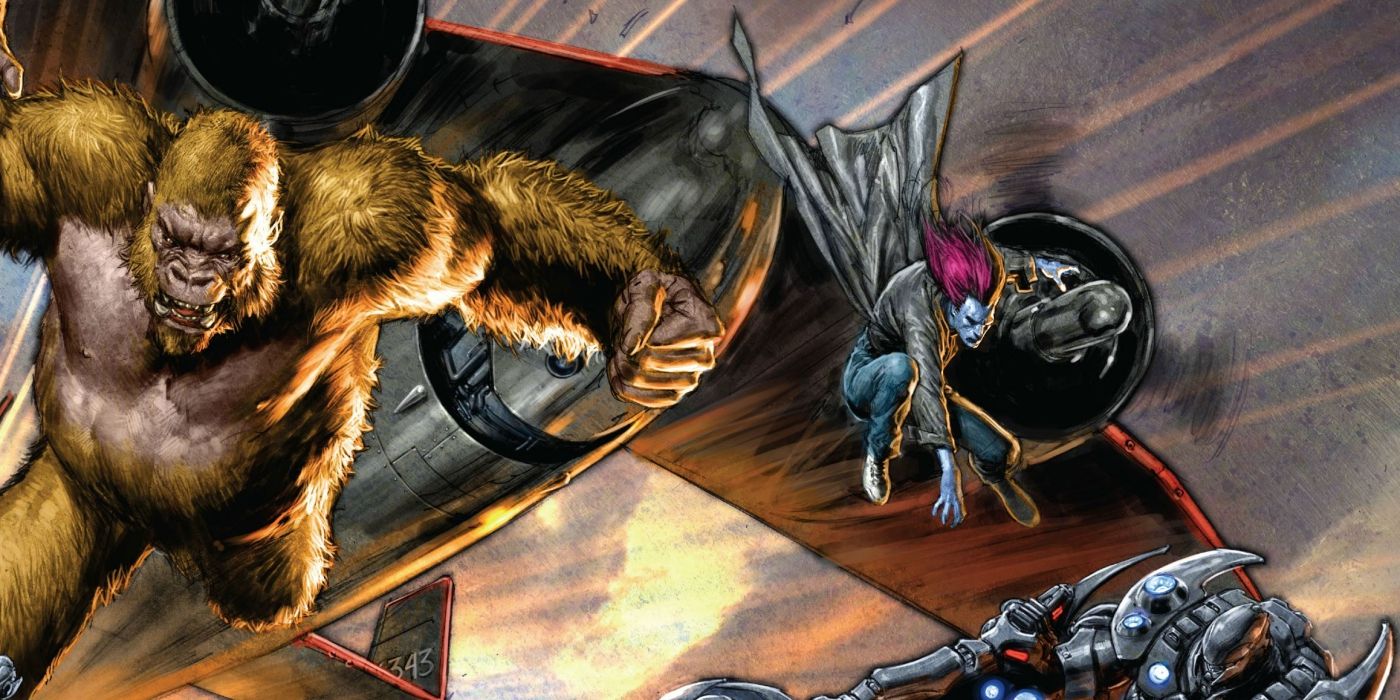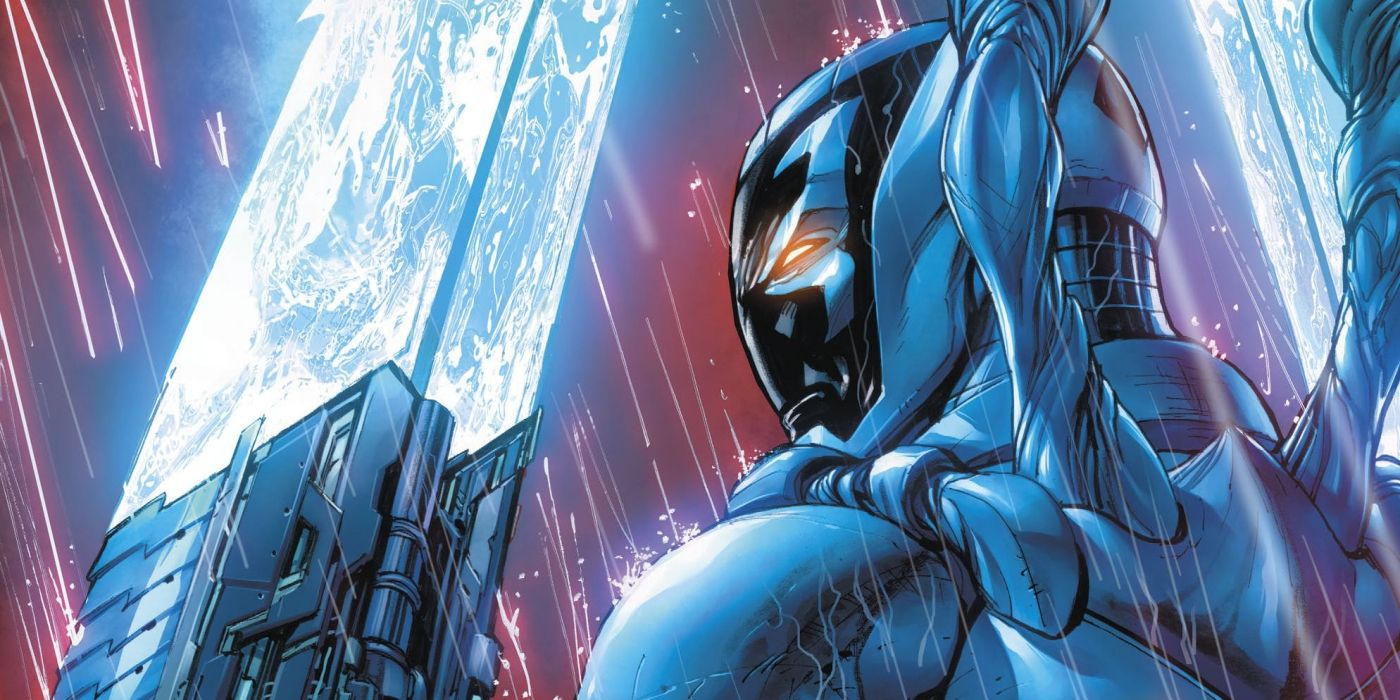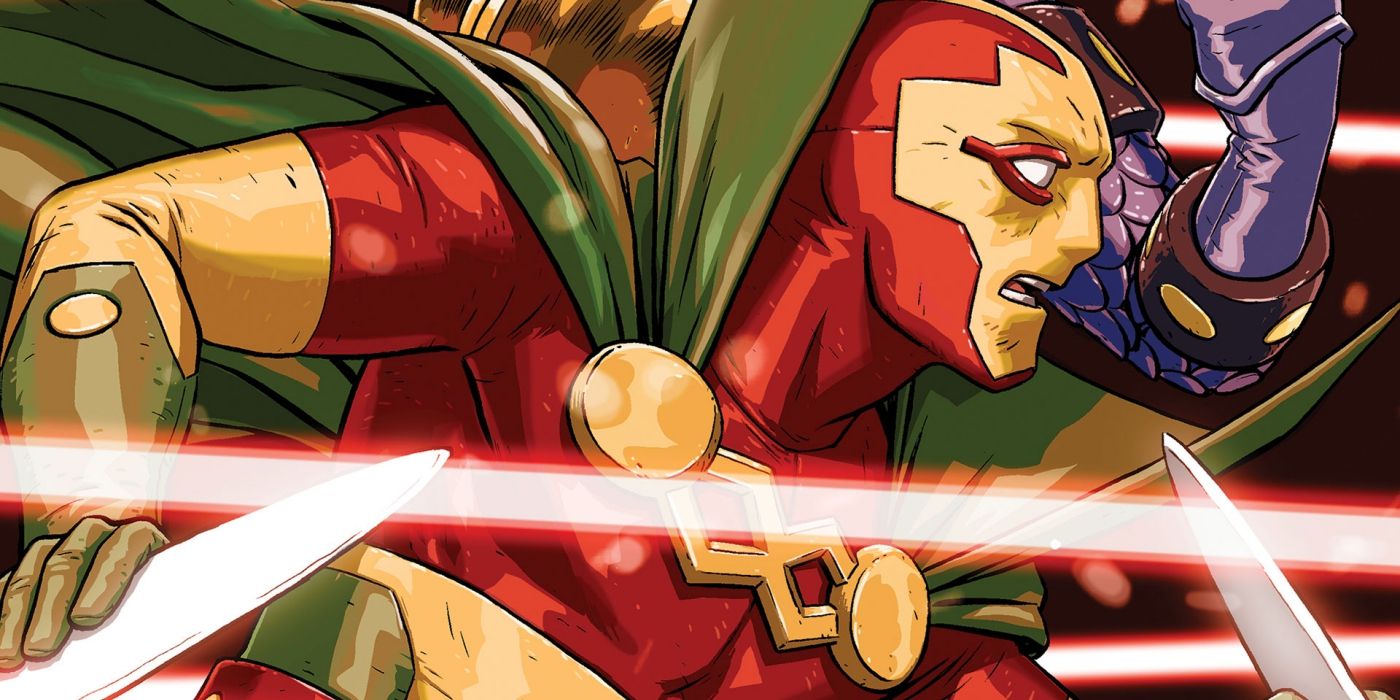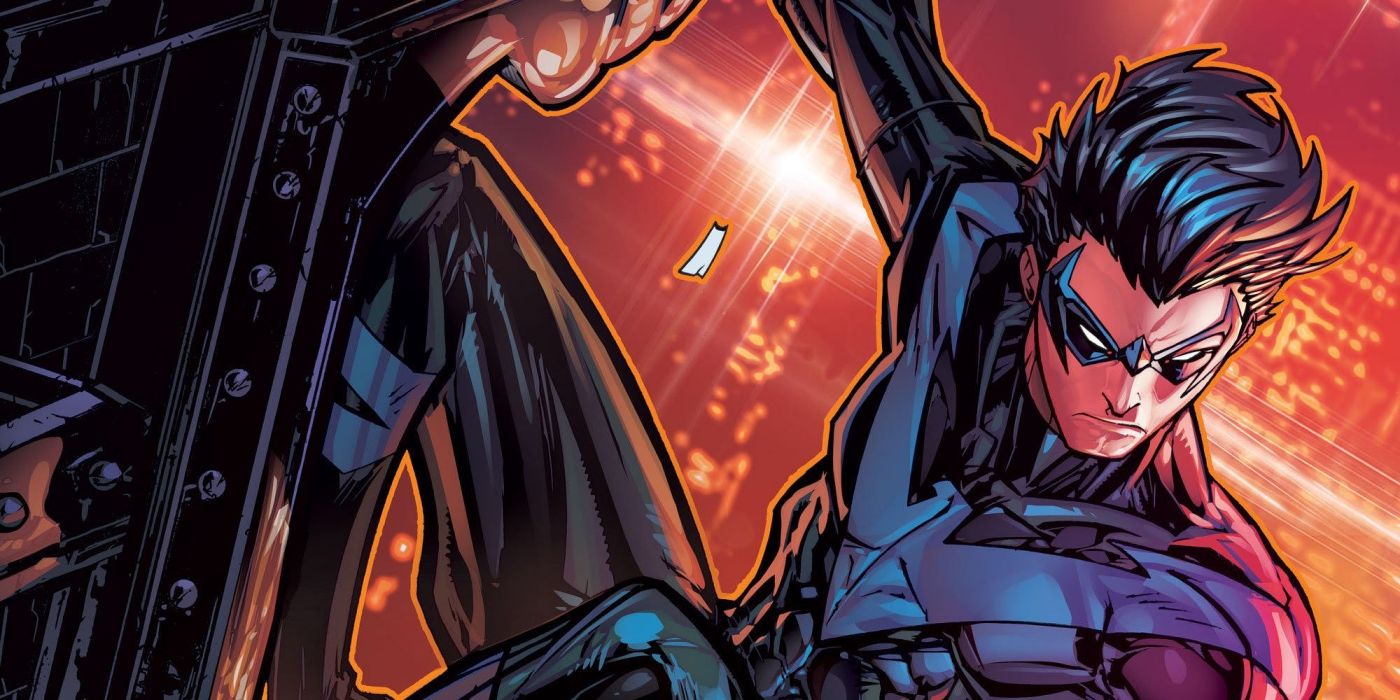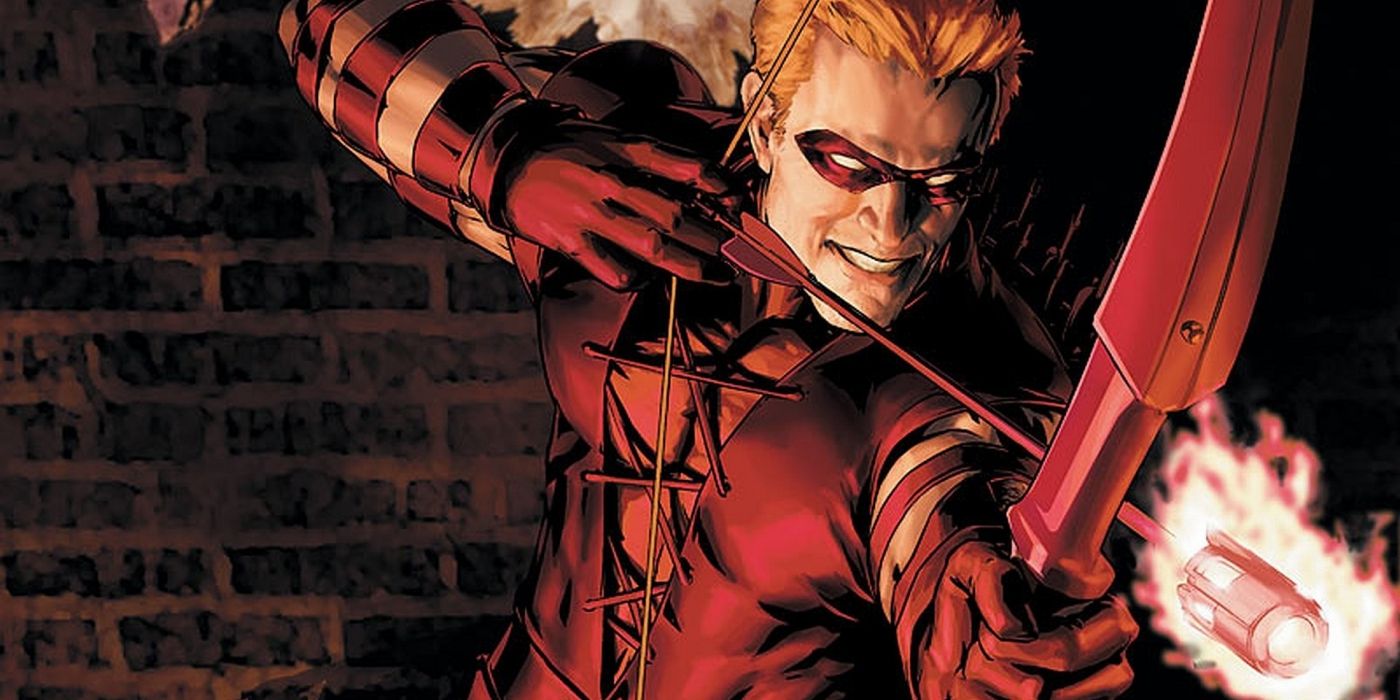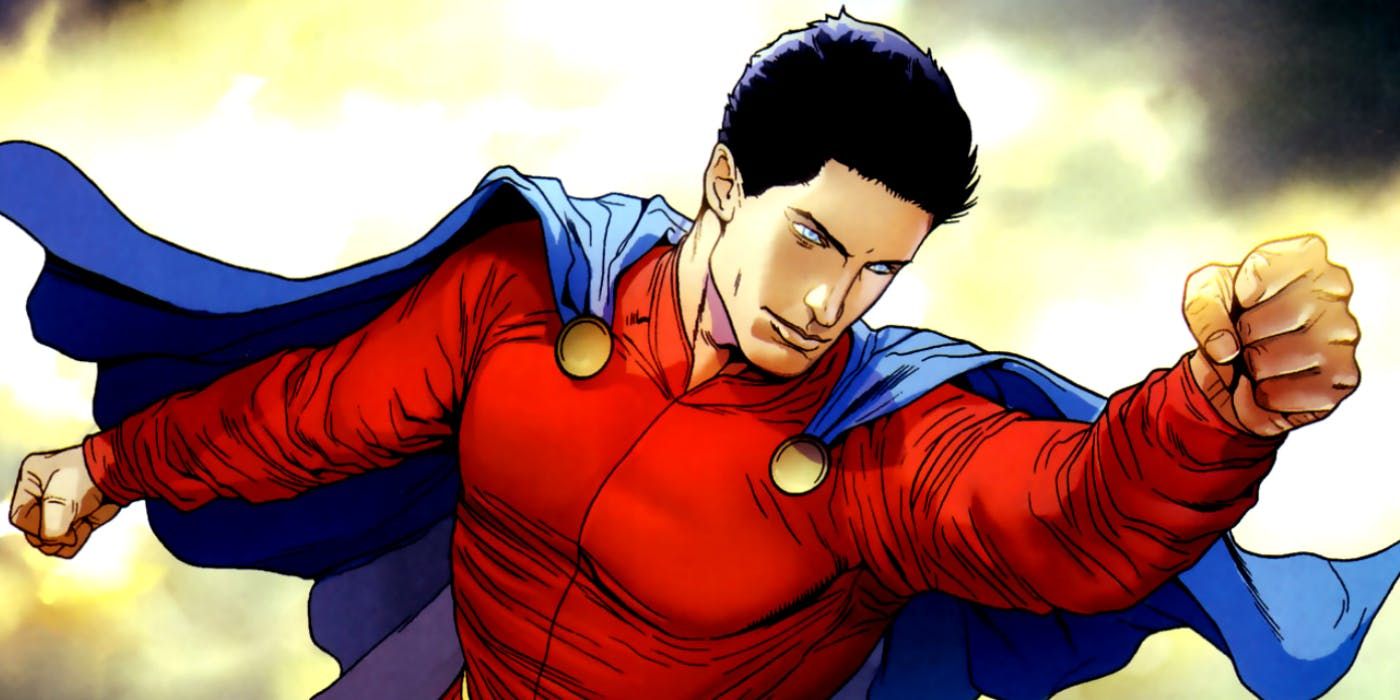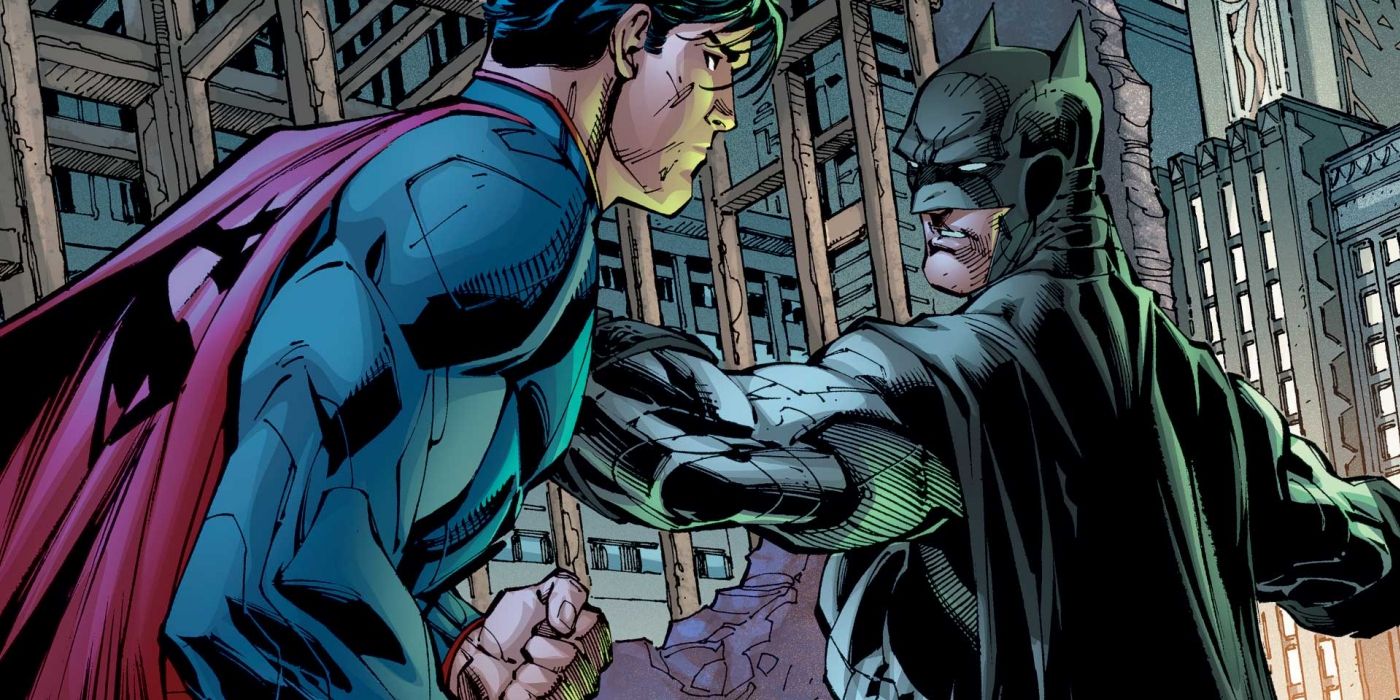The Justice Society of America serves as the provenance of superhero teams as we know them, due to its debut in All-Star Comics in the early '40s. Yet, the Justice League aided in securing the concept’s popularity. As the Justice League of America, the team first appeared in 1960 in The Brave and the Bold #28 and DC began publishing a Justice League of America series that November. At the time, the League consisted of seven founding members: Aquaman, Batman, Flash, Green Lantern, Martian Manhunter, Superman, and Wonder Woman. In the decades since the League's first adventures hit comic book pages, the cast of characters has frequently rotated. Additionally, the roster's expanding and splintering into ancillary groups, such as Justice League Europe or Justice League Task Force, remains quite common. As such, hundreds of heroes have passed through the Hall of Justice.
Of course, some of these heroes are a better fit for the League than others. Specifically, the phrase "better fit" translates to being a good team member in and out of the line of duty. It also means acting as a worthwhile contributor. Not every character previously or currently known as a Leaguer adheres to both qualities. Bearing this and more in mind, it is interesting to note which of DC’s finest heroes upholds the League’s prestigious standards, and which ones are better left out of the League all together. The following list aims to accomplish just that. Here are 10 heroes that are surprisingly good Justice League members, and 10 that had no business being brought aboard at all.
20 SURPRISINGLY GOOD: METAMORPHO
Rex Mason/Metamorpho is one of the rare DC characters that has done the unthinkable: turn down an invitation to join the Justice League. Interestingly, he openly refuses the invitation on more than one occasion. Despite this, Metamorpho and the League have quite the relationship, particularly because of his joining multiple versions of the team. For instance, the main crew, Justice League Europe/Justice League International, and others have given him membership status.
Though he typically works alone, Metamorpho makes for a great team player. This, of course, holds true due to his involvement in many versions of the League. However, it’s most notable in his willingness to sacrifice himself to save fellow Leaguers during the Hyperclan’s attack on the Watchtower.
19 NOT GOOD: HUNTRESS
Helen Bertinelli’s Huntress doesn’t always play well with others. Usually, Huntress makes it work with fellow Bat-Family members. Yet, she’s best known as a member of the Birds of Prey, though her involvement is often depicted as reluctant. She remains steadfast in her views on justice, though. Despite being ruthless in some respects, Huntress employs non-lethal tactics and believes in them wholeheartedly. However, a change in judgement once cost the vigilante her place in the League.
During JLA’s “World War III” storyline, where Luthor’s Injustice Gang infiltrates the Watchtower, Huntress seems prepared to deal a killing blow to one of the League’s fiercest foes in Prometheus. Before she can end him, Batman intervenes, and immediately fires her. She probably shouldn’t have been hired to begin with.
18 SURPRISINGLY GOOD: CYBORG
Cyborg is nothing if not excellent with a team -- honestly, he’s a character who functions better with a group of heroes than without. Yet, his Justice League induction at the advent of the New 52 could not have been more surprising. Firstly, this is due to his team dynamic with the Teen Titans being what helped him soar to popularity. Secondly, many fans were left wondering why other Titans didn’t join the main League lineup ahead of Cyborg.
All in all, Cyborg does indeed seem a worthy addition to the League. He brings a different energy to the squad that’s effortlessly replicated in the Justice League live-action film. It’s no wonder Cyborg remained a part of the team even after the DC Rebirth launch.
17 NOT GOOD: LOBO
Generally, Lobo is considered villainous. However, The Main Man does flirt with anti-heroic behavior. In this respect, his actions seem somewhat nebulous. Perhaps his ability to tow the line is what earns him a spot in the League’s typically prestigious ranks.
At the end of Justice League vs. Suicide Squad, Lobo joins the Batman-led Justice League of America. When Batman convinces him to join, Lobo himself admits he isn’t fit to work with a team. Yet, Lobo functions well within this odd group of heroes, as he and Killer Frost challenge the idea of what it means to be a superhero. Still, his induction onto any version of the League feels strange.
16 SURPRISINGLY GOOD: BIG BARDA
Growing up on Apokolips and training to lead the Female Furies, Darkseid’s elite guard, can’t have been easy. Despite a brutally difficult upbringing, Big Barda manages to develop the values of a hero. It’s no wonder the Justice League recruits her. She gets involved with the League around the time that Scott Free/Mister Miracle joins Justice League International. Whenever Big Barda participates, she proves an invaluable member.
Her worth is more than evident in her willingness to train a fellow Leaguer, Fire. Barda also leads missions for the Justice League of America. Her involvement is fairly infrequent, as she typically helps out when necessary. Regardless, she’s always a welcomed addition.
15 NOT GOOD: BOOSTER GOLD
Try as he might, Booster Gold isn’t always the best candidate for team player. Sure, there are heroes he matches well with, such as Blue Beetle, but Booster Gold’s joining a bigger operation can be both good and bad. Case in point, he quits the Justice League after feeling disrespected by his peers. It’s inarguably a legitimate reason for walking away from a job. However, Booster hardly behaves in a manner befitting someone owed the respect of other Leaguers.
Instead of working to earn the respect he feels owed, Booster founds another team of heroes, The Conglomerate. His tenure with this group also doesn’t function to his liking. Thus, he abandons his position there, and returns to the League. Needless to say, his indecisiveness helps no one.
14 SURPRISNGLY GOOD: ETRIGAN
As far as DC teams are concerned, Jason Blood/Etrigan the Demon is most notably known for being a part of Justice League Dark. However, Etrigan has offered his time and skill to the Justice League itself. During the “Our Worlds at War” storyline, wherein the League goes missing while searching for lost Atlanteans, Etrigan earns a spot as a new member.
He takes on the role of a magic expert for the team. Not only does he provide mission-related expertise, he also devises ways with which to protect the Watchtower from magical attacks. Such thinking ensures he’s has a lasting impact on the League, even in his absence.
13 BAD: GUY GARDNER
Guy Gardner’s hard-headedness often gets him in far more trouble than he is worth. When he joins Justice League International during post-Crisis continuity, his attitude fails to change. He and Batman have trouble getting along, as the Green Lantern pushes his luck by questioning Batman’s authority. Naturally, this leads to a physical altercation, one that culminates in the Caped Crusader downing Gardner in one blow.
For once, this isn’t an instance of Batman simply being difficult to work with. Gardner gives all of his fellow League members a tough time. Similar to his struggles with the Bat, some altercations end with fists being thrown. Eventually, Gardner leaves the team, after feeling slighted by the Man of Steel. He likely wouldn’t have lasted much longer anyway.
12 SURPRISINGLY GOOD: ZATANNA
As one of DC’s most powerful magicians, Zatanna has plenty to offer the Justice League. Yes, she’s better known for being a Justice League Dark member. However, even prior to JLD’s existence, she receives an invite from the main squad of heroes. Zatanna’s first outing with the League takes place during the “Our Worlds at War” arc. In the League’s absence, Zatanna serves as one of the replacement members.
Apparently, she shows so much promise that she’s a full on member during 2004’s Identity Crisis. There are road blocks along the way -- differing opinions divide the League and, from that, Batman and Zatanna have a falling out. Nevertheless, no one can say she isn’t a valuable addition to the team.
11 NOT GOOD: MAXIMA
Maxima and Superman are equal in power. In fact, she may surpass him, courtesy of abilities like hypnosis, telekinesis, and more. The question stands, then, why wouldn’t she make the perfect Leaguer, specifically if she’s on the side of good? There’s the rub. While Maxima does deserve acknowledgement as one of the “good guys,” she has ulterior motives that lead to her accepting a spot in the League.
Maxima’s one goal is Superman. With said goal comes every intention of being with him. When the Man of Steel fails to reciprocate her feelings, she responds in a manner befitting a villain, not a hero. She willingly joins the Superman Revenge Squad. In no way should such an individual have been allowed within the League’s ranks.
10 SURPRISINGLY GOOD: ORION
Orion’s membership with the Justice League is always fleeting -- he never sticks around long enough to shake things up in any one direction. However, the New God usually serves as an interesting addition to the team. This is evident in both his comic adventures with the League and those featured in animated adaptations.
Despite the infrequency of his involvement, each time Orion joins the League, he brings something of value to the table. The character’s second term features him joining the Justice League of America alongside Big Barda. During this time, he’s essential to the defeat of Starro in the JLA’s “Conquers” storyline. The same can be said of Orion’s helping the League battle Mageddon. Frankly, he’d make a promising full time member.
9 NOT GOOD: WONDER TWINS
The Wonder Twins are the only characters on this list who don’t originate from the comics. They first appear in The All-New Super Friends Hour, which acts as a follow-up animated series to Super Friends. When the Wonder Twins enter the realm of comics, they do so in Extreme Justice, yet another spinoff series.
During their time on the team, they do some good. The Wonder Twins ensure their people are freed from oppression and remain with Extreme Justice until the series’ conclusion. However, they don’t add any value to the team. Other than their own ongoing plot, the Twins are relatively ineffective. Could this explain why they were absent for so many years after Extreme Justice?
8 SURPRISINGLY GOOD: BLACK LIGHTNING
When it comes to superhero teams, most people pinpoint Black Lightning as one of the Outsiders. Still, the Olympic gold-medalist finds himself affiliated with the Justice League from time to time. Interestingly, his first invitation to join the League culminates in his declining the offer. During Infinite Crisis, however, Black Lightning becomes a full-fledged member, working alongside DC’s Trinity, Hal Jordan’s Green Lantern, Red Arrow, Vixen, and others.
He spends a lengthy period of time on the team, offering his talents as a metahuman and as a former advisor to Lex Luthor’s Presidency. Black Lightning only leaves the team after being invited by Batman to join the Outsiders.
7 NOT GOOD: CONGORILLA
Congorilla, formerly the human known as William Glenmorgan, actually isn’t as scary as he sounds. In fact, he’s outright heroic, despite looking as though he would befriend Gorilla Grodd before turning on him. Thus, Congorilla’s problem is not that he fails to uphold the standards of heroism. It’s not even that he makes for a poor teammate -- his problem rests firmly in his being rather unremarkable.
Congorilla underwhelms at every turn, so much so that he holds membership in a group deemed the Forgotten Heroes. Even while he’s on the Justice League, he doesn’t quite rise to the occasion. Truth be told, he hardly serves as a useful asset. The League is no better or worse for having invited him aboard.
6 SURPRISINGLY GOOD: BLUE BEETLE
Jaime Reyes’ Blue Beetle is youthful, vibrant in all that he does. Naturally, his youth bars him from participating in some realms of the DC Universe. The Justice League counts as one such aspect that Jaime steers clear of. However, he does work with former Justice League International members as part of Generation Lost’s Justice League.
Justice League: Generation Lost takes place after the events of "Blackest Night", and follows this League as it tracks down Maxwell Lord. During his stint in this role, Jaime more than proves himself worthy of an eventual spot on the main squad. Things don’t end well for him, but his heroism shines through and through, specifically while he faces Maxwell Lord.
5 NOT GOOD: MISTER MIRACLE
Mister Miracle has close ties to the Justice League, dating back to his first meeting with them in the Justice League of America books in late 1980. However, he does not join until writers Keith Giffen and J. M. DeMatteis debut Justice League International in 1987. His own solo series takes him away every so often, but while on Earth he finds comfort in the League.
Throughout Mister Miracle's history, he’s joined, retired from, and rejoined the Justice League on many occasions. He’s there when needed, yet typically seems more inclined to adventures separate from League duties. As such, Mister Miracle appears to fit better as a League ally, rather than being a member outright.
4 SURPRISINGLY GOOD: NIGHTWING
Maybe Nightwing isn’t a fair addition to this list. People listen to him, respect him. He’s a natural born leader and apparently easy to get along with. Perhaps the true surprise is that the League fails to recruit him sooner in his crimefighting career. There cannot exist a more valued asset to the team, as far as street-level heroes are concerned.
He’s never in the Justice League for long. During JLA’s “The Obsidian Age,” Batman leaves plans behind to instate Nightwing as leader of a new League in the old guard’s absence. In the little time he spends as Batman, Dick joins yet another new version of the League; again, he takes on a leadership role. Thus, Dick Grayson is quite often exactly what the Justice League needs.
3 NOT GOOD: ROY HARPER
Roy Harper, regardless of whether he’s using the Speedy, Red Arrow, or Arsenal moniker, has a tough time keeping himself in line. The character’s been through plenty since his 1941 debut. However, he persistently manages to come out on the other side of hardship. Still, Roy’s hard-headedness doesn’t make him the best candidate for League membership.
Roy’s most notable period of time as a Leaguer happens after he quits the Outsiders in “One Year Later.” He joins the League as Red Arrow, courtesy of Hal Jordan’s invitation, then leaves and rejoins, again. Perhaps Roy’s failure with the League can be attributed to his working better alongside peers, in groups such as the Outlaws or Outsiders.
2 SURPRISINGLY GOOD: MON-EL
Mon-El’s character first appears in a 1961 issue of Superboy, a series that explores Superman’s teenage years before he becomes the Man of Steel. Many origins stories make up Mon-El’s lengthy history, yet his most common adventures feature him as a member of the Legion of Super-Heroes. Most would agree that Mon-El serves the DC Universe best as a Legionnaire. However, he also fits within the Justice League quite well.
After the events of “Infinite Crisis,” Mon-El spends a lengthy period of time in the 21st Century. Looking to found a new Justice League, Kimiyo Hoshi’s Doctor Light brings him on as a League member. Though his tenure is brief, Mon-El leaves quite the lasting impression.
1 NOT GOOD: BATMAN
No one needs convincing that Batman doesn’t deserve a Leaguer of the year award. He works best alone, mostly because that was always his intention. But paranoia and a need to control everything effectively impedes healthy work relationships, too. In no way is this better illustrated than during the JLA “Tower of Babel” arc.
“Tower of Babel” explores what happens when Batman's paranoia is used against his allies. Unbeknownst to the League, Batman harbors classified files on each hero and how best to neutralize their abilities. Ra’s al Ghul gets ahold of said information, unloading a wave of destruction Batman himself couldn’t anticipate. Does Batman ever redeem himself? Debatable. Yet, his expulsion from the League after this event makes all the sense in the world.

